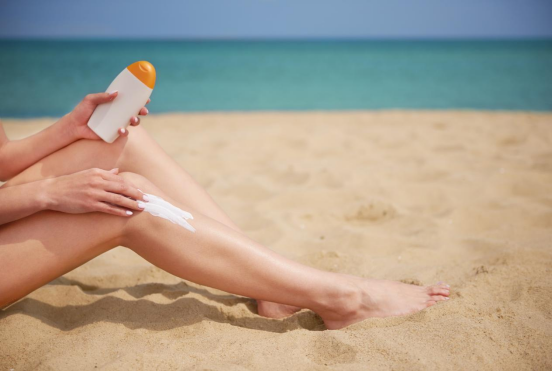
As customers become significantly savvy concerning skin care, the argument in between chemical and physical sun blocks continues to be a hot topic. While both deal important defense against the sun's unsafe ultraviolet (UV) rays, physical sunscreens are typically admired for their mild yet reliable formulation, making them a favored option for those with delicate or responsive skin. The key to their success lies in their active components, which develop a physical barrier on the skin to block out UV radiation. This post will certainly look into the globe of physical sun blocks, concentrating on their key ingredients: zinc oxide and titanium dioxide.
Unlike their chemical counterparts, which take in UV radiation and convert it into warm, physical sunscreens function by sitting on top of the skin to develop a guard that disperses and spreads both UVA and UVB rays. This system is why they are usually described as "sunscreens." The key benefit of this technique is its instant efficiency upon application and the lower probability of triggering skin inflammation, as the ingredients are not absorbed into the skin.
One of the most popular active ingredient in the physical sun block household is Zinc Oxide. This powerhouse mineral is special in its ability to provide broad-spectrum defense, suggesting it properly safeguards the skin versus the full range of UVA and UVB rays. UVA rays are responsible for early aging, consisting of wrinkles and fine lines, while UVB rays are the key source of sunburn. By using detailed protection versus both, zinc oxide plays a critical function in stopping sun damage and minimizing the risk of skin cancer cells.
Moreover, zinc oxide is renowned for its soothing residential properties. It has been used for physical sunscreen ingredients centuries to deal with minor skin irritabilities, rashes, and burns, a testament to its mild nature. This makes sunscreens created with zinc oxide a suitable choice for people with sensitive skin, acne-prone skin, or conditions like rosacea and eczema. Its non-comedogenic residential or commercial properties additionally indicate it is less most likely to block pores, a common problem for those with oily or mix skin.
The other principal in the physical sunscreen group is Titanium Dioxide. This naturally happening mineral is another exceptional ingredient for producing a physical obstacle against UV rays. It is very effective at reflecting and spreading UVB radiation, providing durable defense against sunburn. While it uses good security throughout the UVB spectrum, it is normally taken into consideration less efficient versus long-wave UVA rays compared to zinc oxide.
Therefore, titanium dioxide is often utilized in conjunction with zinc oxide in sunscreen formulas. This mix develops a synergistic impact, boosting the total broad-spectrum protection of the product. By leveraging the staminas of both active ingredients, formulators can create a sunscreen that provides detailed and reliable defense against the sun's harmful rays. Like zinc oxide, titanium dioxide is likewise mild on the skin and is an ideal alternative for those with sensitive or easily irritated skin.
Over the last few years, innovations in solution technology have addressed one of the initial drawbacks of physical sunscreens: the thick, white cast they would frequently leave on the skin. Modern formulations now use micronized or nano-sized fragments of zinc oxide and titanium dioxide, which permits an extra cosmetically classy application without compromising their safety capacities. This suggests you can enjoy the mild, reliable defense of a physical sun block without the tell-tale white residue.
In conclusion, physical sunscreens supply a reliable and mild means to secure your skin from the sun. Their star ingredients, zinc oxide and titanium dioxide, operate in consistency to create a physical guard that disperses dangerous UVA and UVB rays. With their exceptional security profile and viability for all skin kinds, particularly sensitive skin, physical sun blocks are a powerful force in the fight versus sunlight damage. The following time you are Surf the sunscreen aisle, consider the effective, protective, and skin-loving benefits of a physical solution.